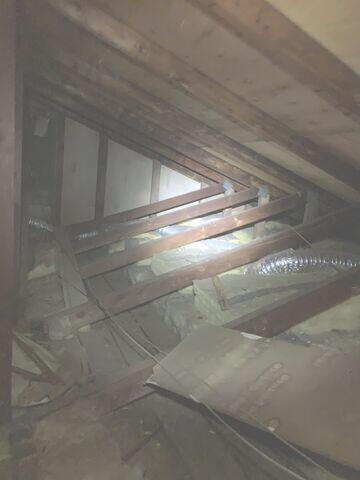
Poorly insulated attic
This attic had piles of fiberglass insulation laying in different areas with cardboard and other materials sitting on top. With no air seal, this was an ineffective method to try and insulate the home.
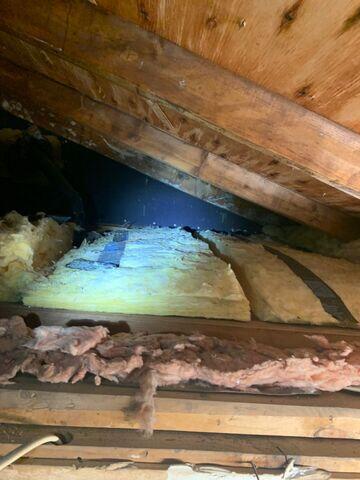
Old Insulation needs removal
With pieces of old fiberglass insulation stuffed in the frames of the attic, this was not delivering an effective R Value and performance to keep the homes temperature controlled in the rooms below.
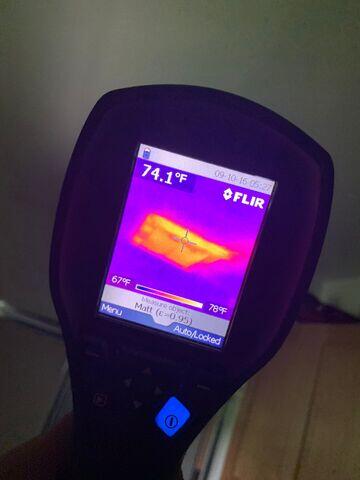
Hot top floor
Ceiling spots in the top floor of this home were showing to be hot on the thermal imaging camera. Temperatures in different areas of this top floor went from 64 degrees to 74 degrees.
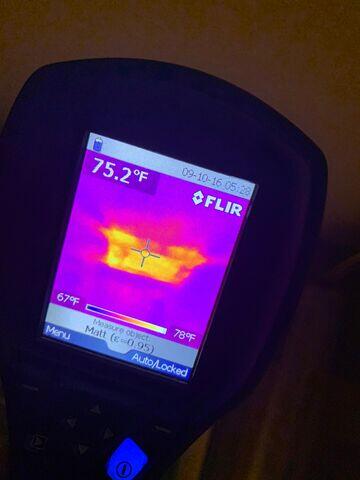
Top Floor Too Hot
This area of the top floor was 75 degrees. 6 degrees warmer than the homeowner had their AC temperature set to.

Air Sealing and Radiant Barrier
After removing the old insulation, the attic surface was air sealed with Zyp Foam to eliminate conditioned air leakage from the rooms below. A radiant barrier was installed on the underside of the roofing. A radiant barrier works similarly to a windshield shade people place in their cars in the summer. It keeps radiant heat from penetrating into the attic.
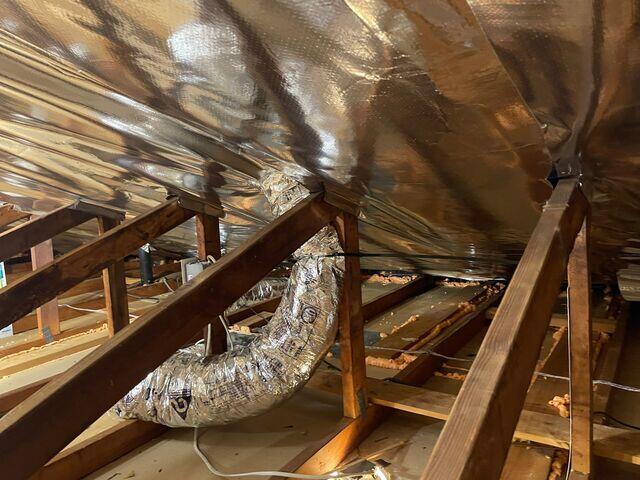
Radiant Barrier and Air Sealing
The radiant barrier in this attic will help keep the attic from heating up as much when the sun is beating down on the roof above. Air sealing with Zyp Foam was done to prevent air leakage.
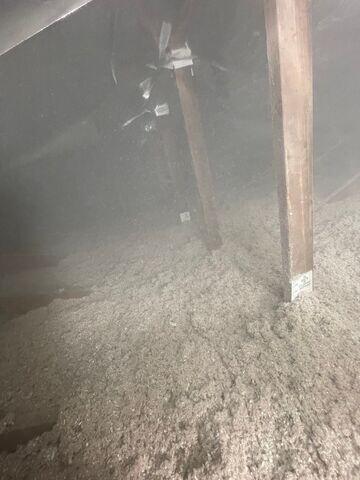
Cellulose Insulation
Tru Soft cellulose insulation was blown in to cover the attic surface and properly insulate the home.
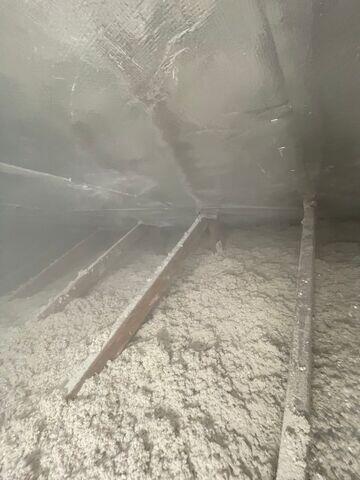
Attic Insulation
With air sealing, insulation and a radiant barrier, this home will now be more comfortable year round and have lower energy bills. No more hot top floor in the summer!

